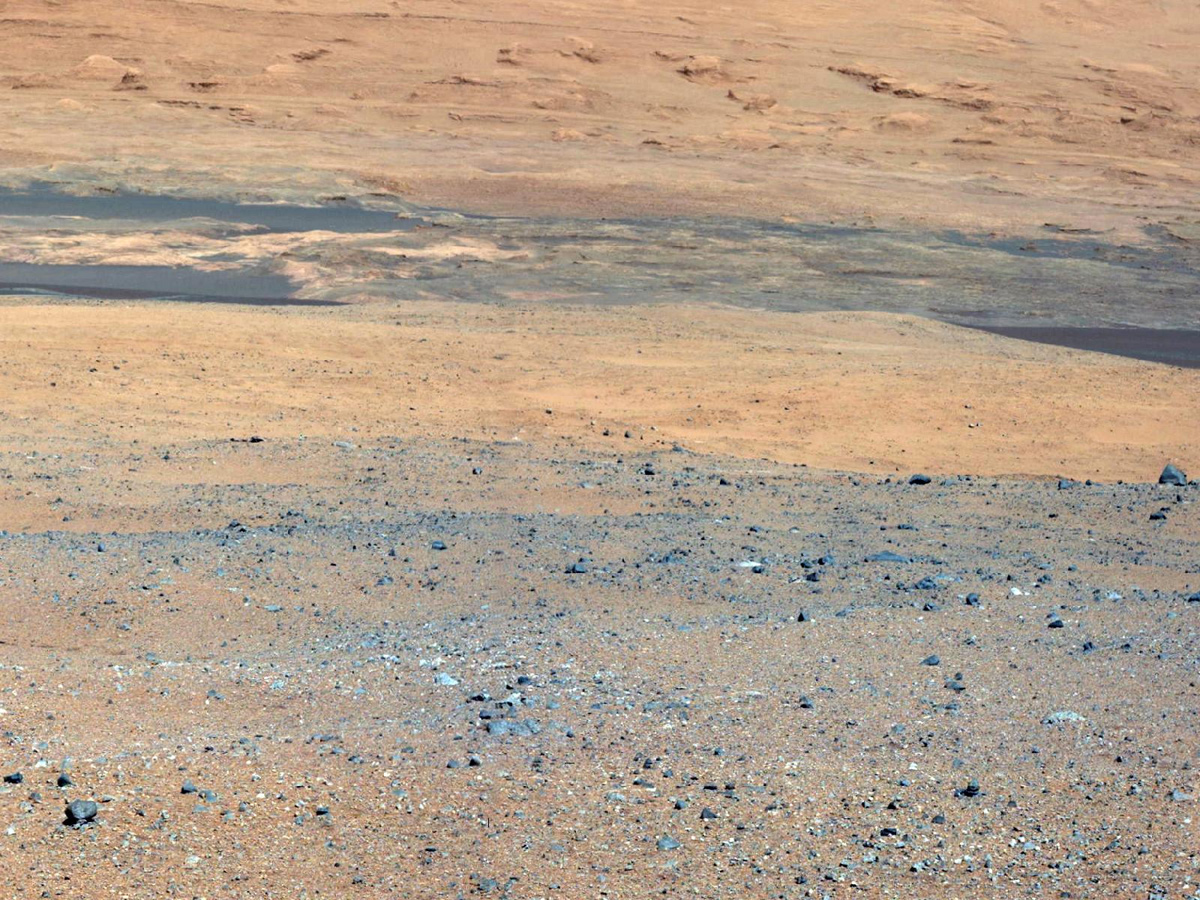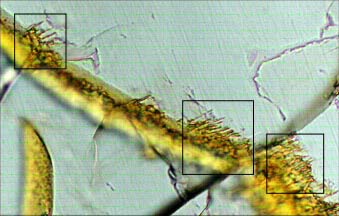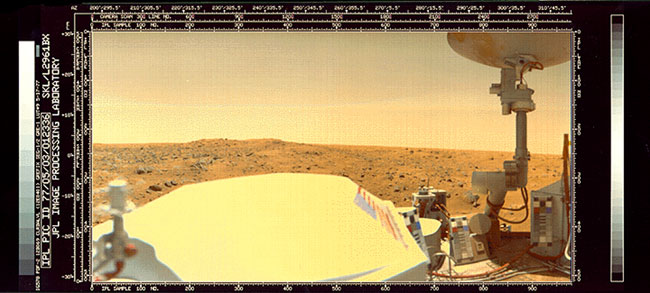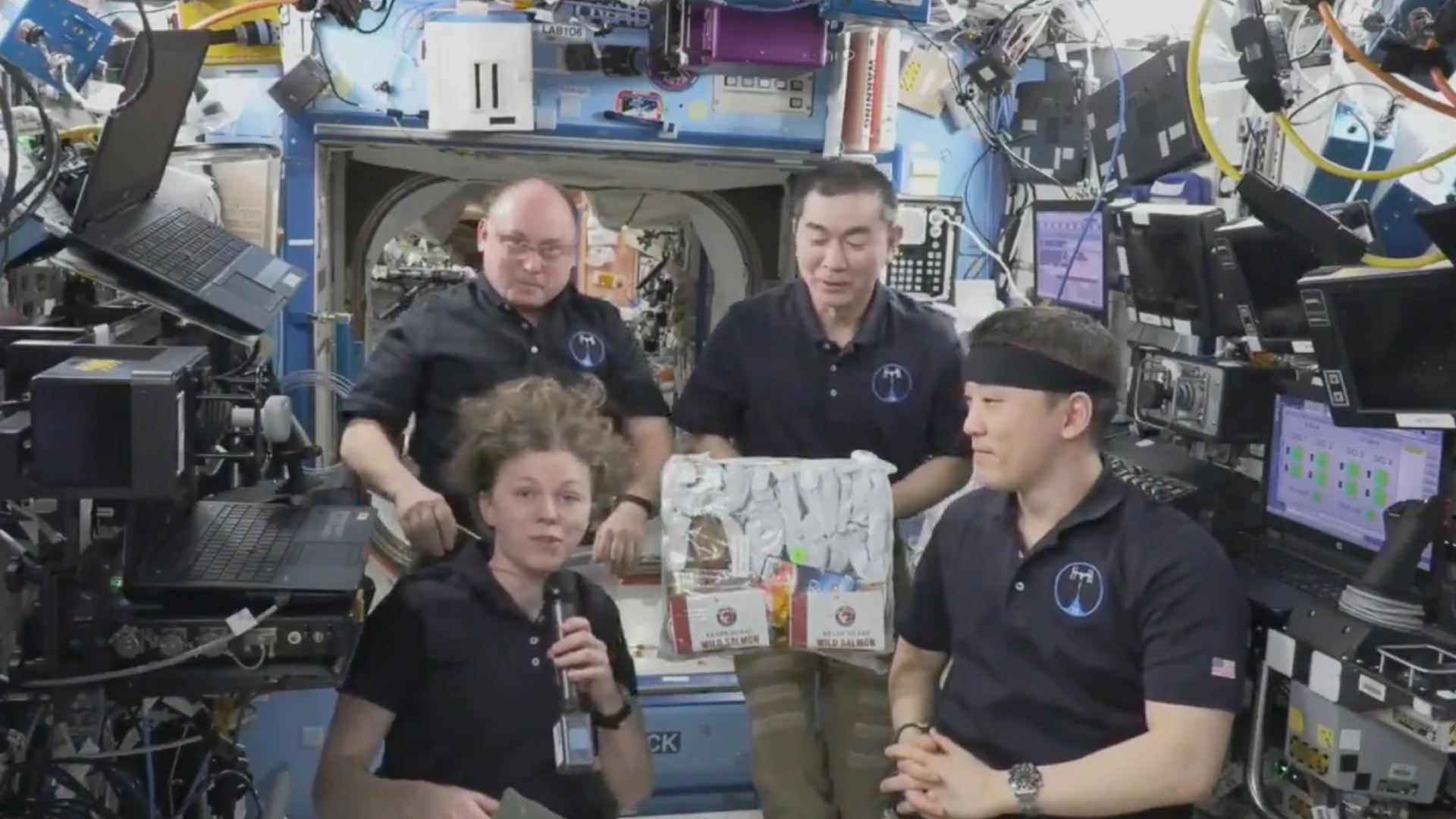Life on Mars: Exploration & Evidence
When imagining locations where extraterrestrial life could potentially dwell, few places inspire the imagination like one of Earth's closest neighbors. For centuries, man has looked to Mars and imagined it as a home for other beings. Over the last fifty years, various missions to the red planet have sought to determine the probability of such an evolution. But how likely is life on Mars?
A habitable environment
When searching for life, most astrobiologists agree that water is key. All forms of terrestrial life require water, and while it is possible that life could evolve without the precious liquid, it is easier to search for conditions that are known to be optimal, rather than conditions we suppose could be." [5 Bold Claims of Alien Life ]
This raises a problem on Mars. The planet today is dry and barren, with most of its water locked up in the polar ice caps. The planet's thin atmosphere allows radiation from the sun to irradiate the surface of the planet, adding to the environment's challenges. Evidence for water first showed up in 2000, when images from NASA's Mars Global Surveyor found gullies that appeared to have formed from flowing water.
But Mars wasn't always a desolate wasteland. Scientists think that, in the past, water may have flowed across the surface in rivers and streams, and that vast oceans covered the planet. Over time, the water was lost into space, but early conditions on the wetter planet could have been right for life to evolve. One estimate suggests that an ancient ocean could have covered as much as 19 percent of the planet's surface, compared to the 17 percent covered by Earth's Atlantic Ocean.
"With Mars losing that much water, the planet was very likely wet for a longer period of time than was previously thought, suggesting it might have been habitable for longer," said Michael Mumma, a senior scientist at Goddard, said in a statement.
It's also possible that liquid water flows on a modern Mars, either on the surface or beneath. The debate continues today on whether features known as recurring slope lineae (RSLs) form from ongoing water flows or running sand. "We've thought of RSL as possible liquid water flows, but the slopes are more like what we expect for dry sand," Colin Dundas of the U.S. Geological Survey's Astrogeology Science Center in Flagstaff, Arizona, said in a statement. "This new understanding of RSL supports other evidence that shows that Mars today is very dry.
Water beneath the surface may be even better for life. Underground water could shield potential life from harsh radiation. There's evidence for an ice deposit the size of Lake Superior. "This deposit is probably more accessible than most water ice on Mars, because it is at a relatively low latitude and it lies in a flat, smooth area where landing a spacecraft would be easier than at some of the other areas with buried ice," researcher Jack Holt of the University of Texas said in a statement.
Breaking space news, the latest updates on rocket launches, skywatching events and more!
Tiny UFOs
Over the last four billion years, Earth has received a number of visitors from Mars. Our planet has been bombarded by rocks blown from the surface of the red planet, one of the few bodies in the solar system scientists have samples from. Of the 34 Martian meteorites, scientists have determined that three have the potential to carry evidence of past life on Mars.
A meteorite found in Antarctica made headlines in 1996 when scientists claimed that it could contain evidence of traces of life on Mars. Known as ALH 84001, the Martian rock contained structures resembled the fossilized remains of bacteria-like lifeforms. Follow-up tests revealed organic material, though the debate over whether or not the material was caused by biological processes wasn't settled until 2012, when it was determined that these vital ingredients had been formed on Mars without the involvement of life.
"Mars apparently has had organic carbon chemistry for a long time," study lead author Andrew Steele, a microbiologist at the Carnegie Institution of Washington, told SPACE.com.
However, these organic molecules formed not from biology but from volcanism. Despite the rocky origin for the molecules, their organic nature may prove a positive in the hunt for life.
"We now find that Mars has organic chemistry, and on Earth, organic chemistry led to life, so what is the fate of this material on Mars, the raw material that the building blocks of life are put together from?" Steele said.
Scientists also found structures resembling fossilized nanobacteria on the Nakhla meteorite, a chunk of Mars that landed in Egypt. They determined that as much as three-fourths of the organic material found on the meteorite may not stem from contamination by Earth. However, further examination of the spherical structure, called an ovoid, revealed that it most likely formed through processes other than life.
"The consideration of possible biotic scenarios for the origin of the ovoid structure in Nakhla currently lacks any sort of compelling evidence," the scientists wrote in a study in the journal Astrobiology. "Therefore, based on the available data that we have obtained on the nature of this conspicuous ovoid structure in Nakhla, we conclude that the most reasonable explanation for its origin is that it formed through abiotic [physical, not biological] processes."
A third meteorite, the Shergotty, contains features suggestive of biofilm remnants and microbial communities.
"Biofilms provide major evidence for bacterial colonies in ancient Earth," researchers said in a 1999 conference abstract. "It is possible that some of the clusters of microfossil-like features might be colonies, although that interpretation depends on whether the individual features are truly fossilized microbes."
All of these samples provide tantalizing hints of the possibility of life in the early history of the red planet. But a fresh examination of the surface has the potential to reveal even more insights into the evolution of life on Mars.
Searching for life
When NASA set the first lander down on the Martian surface, one of the experiments performed sought traces for life. Though Viking's results were deemed inconclusive, they paved the way for other probes into the planet's environment. [Mars Explored: Landers and Rovers Since 1971 (Infographic)]
Exploration of Mars was put on hold for more than two decades. When examination of the planet resumed, scientists focused more on the search for habitable environments than for life, and specifically on the search for water. The slew of rovers, orbiters, and landers revealed evidence of water beneath the crust, hot springs — considered an excellent potential environment for life to evolve — and occasional rare precipitation. Although the Curiosity rover isn't a life-finding mission, there are hopes that it could pinpoint locations that later visitors might explore and analyze.
Future mission to Mars could include sample returns, bringing pieces of the Martian crust back to Earth to study. More experiments could be run by hand on Earth than can be performed by a remote robot explorer, and would be more controlled than meteorites that have lain on Earth.
"Mars 2020 will gather samples for potential return to Earth in the future. It's time for the sample-analysis community to get serious about defining and prioritizing Mars sample science, and in helping to make the case for the future missions that would get those samples home," David Beaty, co-leader of NASA's Returned Sample Science Board and chief scientist for the Mars Exploration Directorate at NASA's Jet Propulsion Laboratory (JPL) in Pasadena, California, said at a 2017 workshop.
But the hunt for Martian life may be stymied by concerns over how to prevent infecting the Red Planet with Earth life. Current international policies impose heavy financial burdens that make exploring potentially habitable regions of Mars an extra challenge.
"Bottom line is that a thorough cleaning of a spacecraft aimed to in situ search for life on a special region of Mars today would easily cost around $500 million," Dirk Schulze-Makuch told SPACE.com via email. Schulze-Makuch, a researcher at Washington State University, and his colleague Alberto Fairen of Cornell University authored a commentary article published in the journal Nature Geoscience arguing for less-strict protection measures for Mars.
"With that amount of money, you can entirely finance a 'Discovery-type' mission to Mars, similar to Pathfinder or InSight," he added. "Therefore, if we'd relax planetary protection concerns in a Viking-like mission today, we could add another low-budget mission to the space program."
Are we the Martians?
The transfer of material from Mars to Earth and presumably back again has sparked some debate about the possibility of contamination early in the history of life. Some scientists argue that a meteorite from Earth could have traveled to Mars — or vice versa. Debates rage over whether or not tiny organisms would be hardy enough to survive the voyage through a freezing, airless, radiation-filled vacuum and kick off life at its new home.
The idea of such seeding is not limited to interactions with Mars. Some have proposed that debris from outside the solar system could even be responsible for spawning life on Earth. But in terms of the Red Planet, it is possible that scientists might one day find life on Mars — and it could be a close relation.
"If we find life on another planet, will it be truly alien or will it be related to us? And if so, did it spawn us or did we spawn it?" researcher Dina Pasini, of the University of Kent, questioned in a statement. "We cannot answer these questions just now, but the questions are not as farfetched as one might assume."
Follow Nola Taylor Redd at @NolaTRedd, Facebook, or Google+. Follow us at @Spacedotcom, Facebook or Google+.

Nola Taylor Tillman is a contributing writer for Space.com. She loves all things space and astronomy-related, and always wants to learn more. She has a Bachelor's degree in English and Astrophysics from Agnes Scott College and served as an intern at Sky & Telescope magazine. She loves to speak to groups on astronomy-related subjects. She lives with her husband in Atlanta, Georgia. Follow her on Bluesky at @astrowriter.social.bluesky



